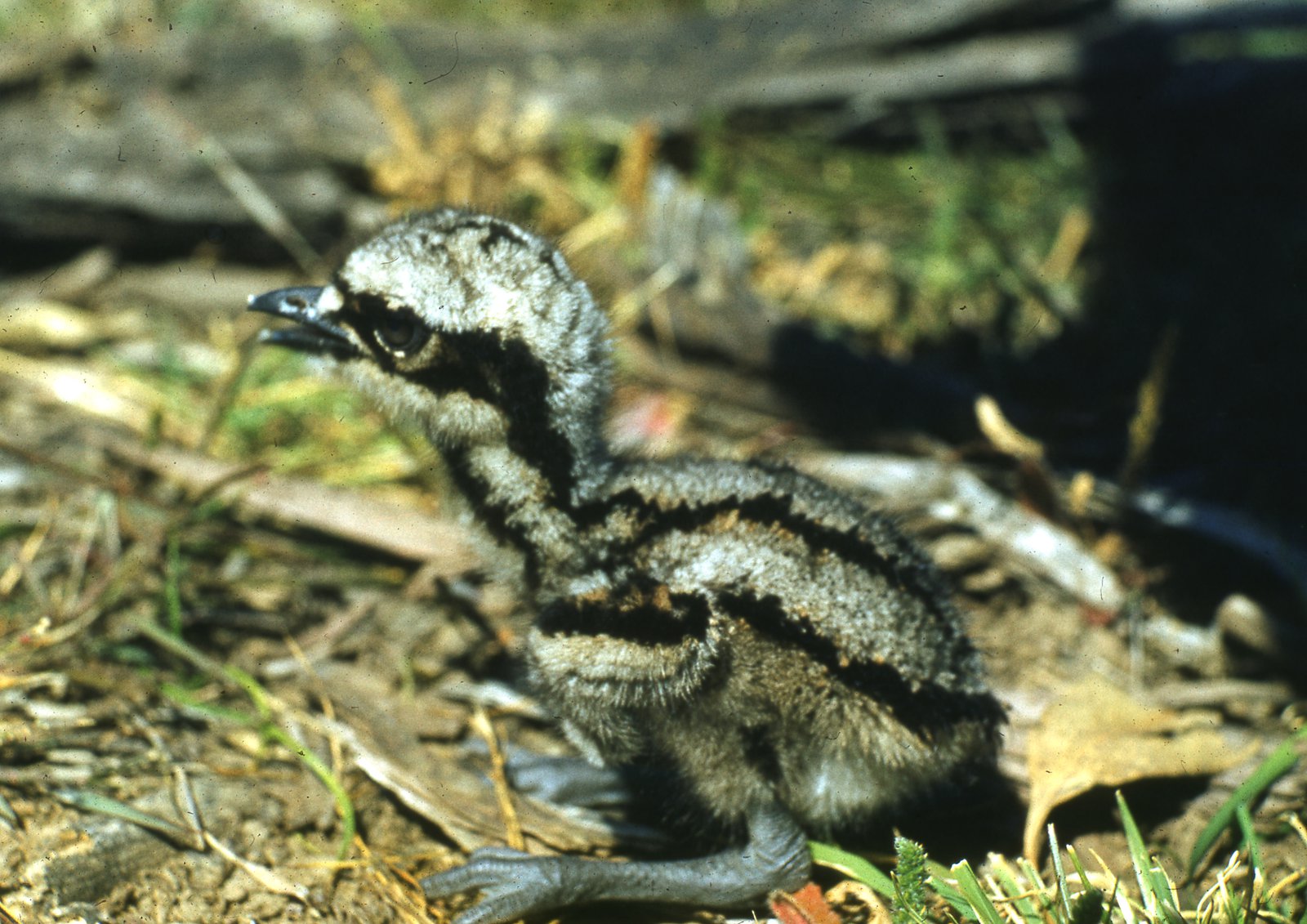Bush Stone-curlew
Bush Thick-knee, Southern Stone Plover, Weeloo, Willaroo
Beach Stone-curlew

© Australian Museum
Bush Stone-curlews were formerly found in the fertile, shale-soiled areas of Sydney - the Cumberland Plain - but are now absent and are listed as threatened in New South Wales because of land clearing practices.
Identification
The Bush Stone-curlew, or Bush Thick-knee, is a large, slim, mainly nocturnal, ground-dwelling bird. It is mostly grey-brown above, streaked with black and rufous. It is whitish below with clear, vertical black streaks. The bill is small and black, and the eye is large and yellow, with a prominent white eyebrow. Both sexes are similar. Young Bush Stone-curlews are similar in appearance to the adults, but are paler, and a little browner in colour. Bush Stone-curlews are nocturnal birds (night birds), doing all their feeding and other activities at night.
Distribution
The range of the Bush Stone-curlew extends throughout Australia.
Feeding and diet
Bush Stone-curlews have a wide-ranging diet, but prefer to feed on insects, molluscs, small lizards, seeds and occasionally small mammals. Feeding takes place at night. During the breeding season, nesting birds will search for food in the vicinity of the nest site, while at other times, birds may travel large distances. All food is taken from the ground.
Communication
The voice is a characteristic drawn-out, mournful 'wer-loooo', often heard at dusk and during the night.
Breeding behaviours
Bush Stone-curlews have a remarkable courtship dance. Individuals stand with their wings outstretched, their tail upright and their neck stretched slightly forward. The birds will stamp their feet up and down, like a soldier marking time. This courtship ritual is repeated for an hour or more at a time and is accompanied by loud and constant calling. Eggs are laid in a shallow scrape in the ground and both adults share the incubation and care for the young.
- Breeding season: July to January
- Clutch size: 1 to 3
- Time in nest: 50 days
Conservation status
The Bush Stone-curlew was formerly quite common, but has declined in numbers through loss of habitat and predation by foxes and feral cats. It can be seen on golf courses and even in cemeteries.
References
- Pizzey, G. and Knight, F. 1997. Field Guide to the Birds of Australia. Angus and Robertson, Sydney.
- Pringle, J.D. 1987. The Shorebirds of Australia. Angus and Robertson and the National Photographic Index of Australian Wildlife, Sydney.
- Schodde, R. and Tideman, S.C. (eds) 1990. Reader's Digest Complete Book of Australian Birds (2nd Edition). Reader's Digest (Australia) Pty Ltd, Sydney.


